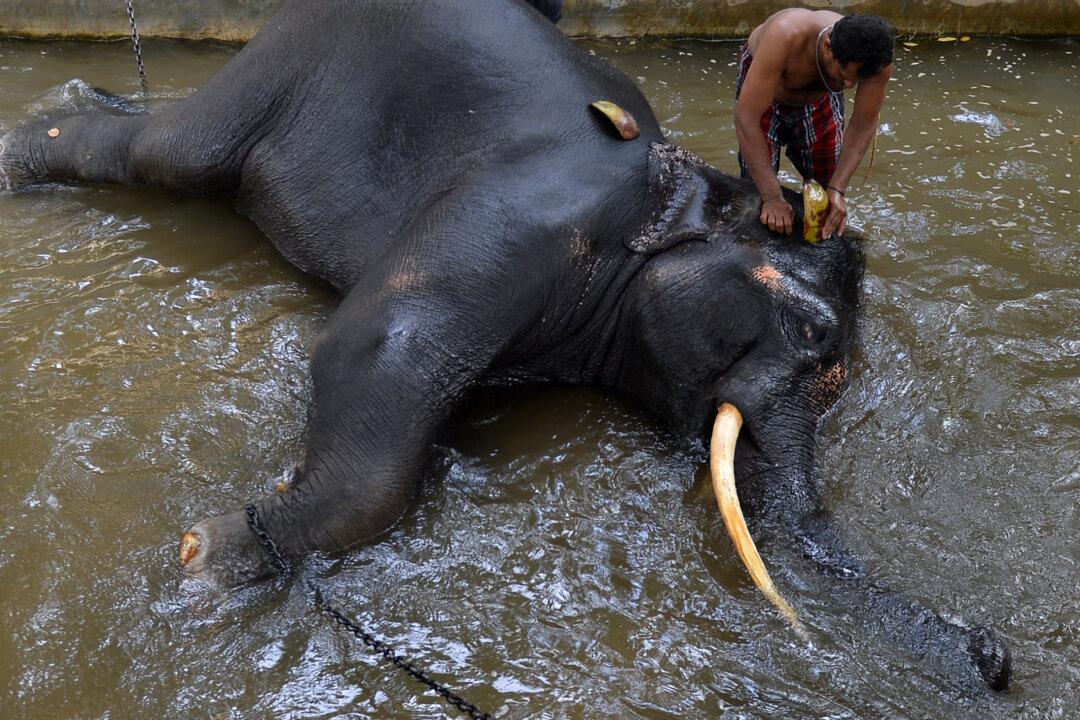An Indian man was crushed to death by an elephant as he tried to wash it when he slipped on the wet floor just as the 5-ton animal sat down.
The moment was caught on CCTV footage, which shows the elephant handler, known as a mahout, washing a large tusker on the morning of March. 3 in Kerala, southern India.





